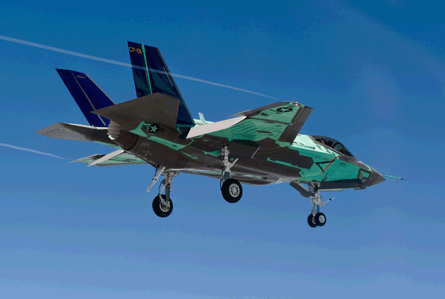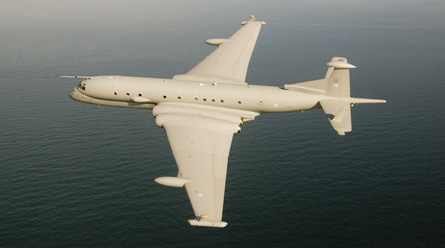The BAE Systems Harrier GR9, Nimrod MRA4 and Lockheed Martin’s short take-off and vertical landing F-35B have been confirmed as the main casualties of the UK coalition government’s Strategic Defence and Security Review (SDSR).
Announcing the results of the review process on 19 October, prime minister David Cameron said the Royal Air Force’s long-delayed Nimrod MRA4 programme is to be cancelled, while the UK’s remaining Harriers will be retired early to safeguard the service’s fleet of Panavia Tornado GR4s, which he says deliver more capability in Afghanistan.
Cameron also slammed the previous Labour government’s selection of the F-35B, and says the UK intends to switch its selection to the JSF’s “more capable, less expensive and longer-range” carrier variant (F-35C pictured below). The decision will also require one of the Royal Navy’s two Queen Elizabeth-class aircraft carriers to be equipped with catapult launch equipment.
 |
|---|
© Lockheed Martin |
Previous plans to greatly increase the size of the RAF’s Boeing CH-47 Chinook fleet have also been watered down, with the Ministry of Defence to acquire just 12 more aircraft. This will increase the RAF’s inventory of the type to 60 aircraft, Cameron says, with an earlier commitment to upgrade the service’s Eurocopter Puma transports to be safeguarded.
Other actions announced by Cameron include plans to cut 5,000 RAF personnel by 2015. This will leave the service with an operating strength of 33,000. The service's Lockheed Martin C-130J tactical transports will be retired from use in 2022, 10 years sooner than previously planned, with the UK to retain its commitment to buying 22 Airbus Military A400Ms.
Cancellation of the Nimrod MRA4 programme brings to an end a troubled acquisition programme worth around £3.6 billion – the bulk of which has already been spent. Contracted in 1996, the project was originally to have delivered 21 maritime patrol aircraft, but had subsequently been slashed to just nine.
 |
|---|
© BAE Systems |
The decision leaves the UK with no dedicated maritime patrol aircraft capability, and extends a gap caused by the retirement of the RAF’s last Nimrod MR2s earlier this year. And in another blow to the RAF's future intelligence, surveillance, target acquisition and reconnaissance operations, the SDSR has also recommended that its newly-fielded Raytheon Systems Sentinel R1 airborne ground surveillance fleet be retired when it is no longer needed to support the NATO-led mission in Afghanistan.
Cameron says the measures to be adopted will result in financial savings worth £4.7 billion over the life of the review period. The process was launched to address a defence budget “Black Hole” totalling £38 billion.
Source: FlightGlobal.com























